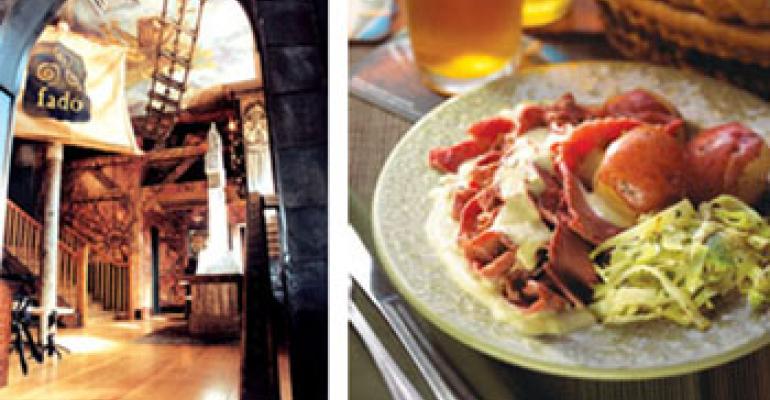It sounds improbable: connecting with guests and providing meaningful customer service with only a 140-character message. But officials of several tech-savvy regional chains, when talking about the service opportunities that are inherent to microblogging site Twitter, list numerous ways they’ve co-opted the social-media phenomenon successfully.
John Piccirillo, director of marketing for Fadó Irish Pub, which operates all but two of the 11 Fadó Irish Pubs and three Tigín Irish Pubs in the United States, says using Twitter is a “good extension of what we try to do in the pub.”
He added that Twitter users care less about advertisements than they do about what their friends think, and because the site is still new, it grabs more attention than e-mail marketing.
“When marketing channels are new and novel, people are attentive to them in a way that they aren’t in other things,” Piccirillo said. “Ten years ago in e-mail marketing, we’d see a 90-percent open rate and a 30-percent click-through rate. It was new, and it grabbed them. People paid attention in a way they wouldn’t with TV or radio.”
About 500 Twitter users have opted in to “follow” the restaurant company, meaning that they’re updated every time Piccirillo posts a “tweet,” or a message that is only 140 characters long at the most. Fadó reaches about 9,000 people using social media like Twitter, Facebook, e-mail or text messaging, he said.
“Using Twitter for customer service—monitoring every time somebody writes ‘Fadó’ or ‘Guinness’ and dedicating resources to follow up—has been a huge win for us,” Piccirillo said. “We can answer basic customer service questions from ‘where is the pub’ to ‘what time does the band come on,’ and customers think: ‘Wow, they’re paying attention. This is cool.’”
Responding to questions or complaints on Twitter has the added benefit of all the brand’s online followers seeing Fadó in action, he said.
“In Twitter, there have been some brilliant moments of customer service that are broadcast to large groups of people,” Piccirillo said. “If somebody has a not-so-great experience and we respond to it quickly, the benefit of resolving it online surprises people.”
Responding to tweets has affected small yet significant changes at 10-unit Z’Tejas Southwestern Grill, said Deborah Topcik, director of marketing. For instance, Z’Tejas now stocks kids’ cups because of a complaint a customer sent to the company’s Twitter page, which Topcik manages every day.
However, most tweets directed at the Z’Tejas page either ask basic questions or praise the restaurant, she said.
“My guests are telling me what to do, and I’m taking it,” she said.
Topcik also likes Twitter because it is a preferred site for many hotels or convention and visitor bureaus looking to follow news of local restaurants.
“Very few organizations are on Facebook, but most are on Twitter,” Topcik said. “It’s great for me to say that we’re doing an all-night happy hour on Twitter and have those organizations know what we’re doing. If I had to call every group, it’d take too much time.”
She estimates that she spends about an hour a day talking to customers via social media, responding to tweeted questions, or following up via phone or e-mail when a Twitter follower logs a complaint.
“This is the way of the future,” she says. “It’s something I have to put time into. I have to.”
Mastering Twitter or any social media has important implications for customer service inside restaurants as well, said marketing consultant Arjun Sen. Guests can tweet criticisms far and fast, Sen says, amplifying the old way of voicing displeasure: calling customer service and screaming.
“With Twitter,” Sen said, “I not only can scream, but now I can put my complaint in front of others and deliver it directly to people. It means that you need to correct mistakes before a guest leaves the restaurant. Now, a guest could have a bad experience and be fluent in Twitter, so by the time she gets to her car, everybody knows that your restaurant is having a bad night.”
It’s crucial not just to understand current social-media tools like Twitter and Facebook, Sen added, but also whatever social media is sure to come along and replace it, something Piccirillo already recognizes.
“After Facebook and Twitter, we’ll have to jump to something new,” Piccirillo said. “We’re going to stay in front, because the impact we have is substantial, even if the audience is small. It’s this tribal, social, kind of herd mentality that you can influence. Get a few key people, and you can move mountains.”




